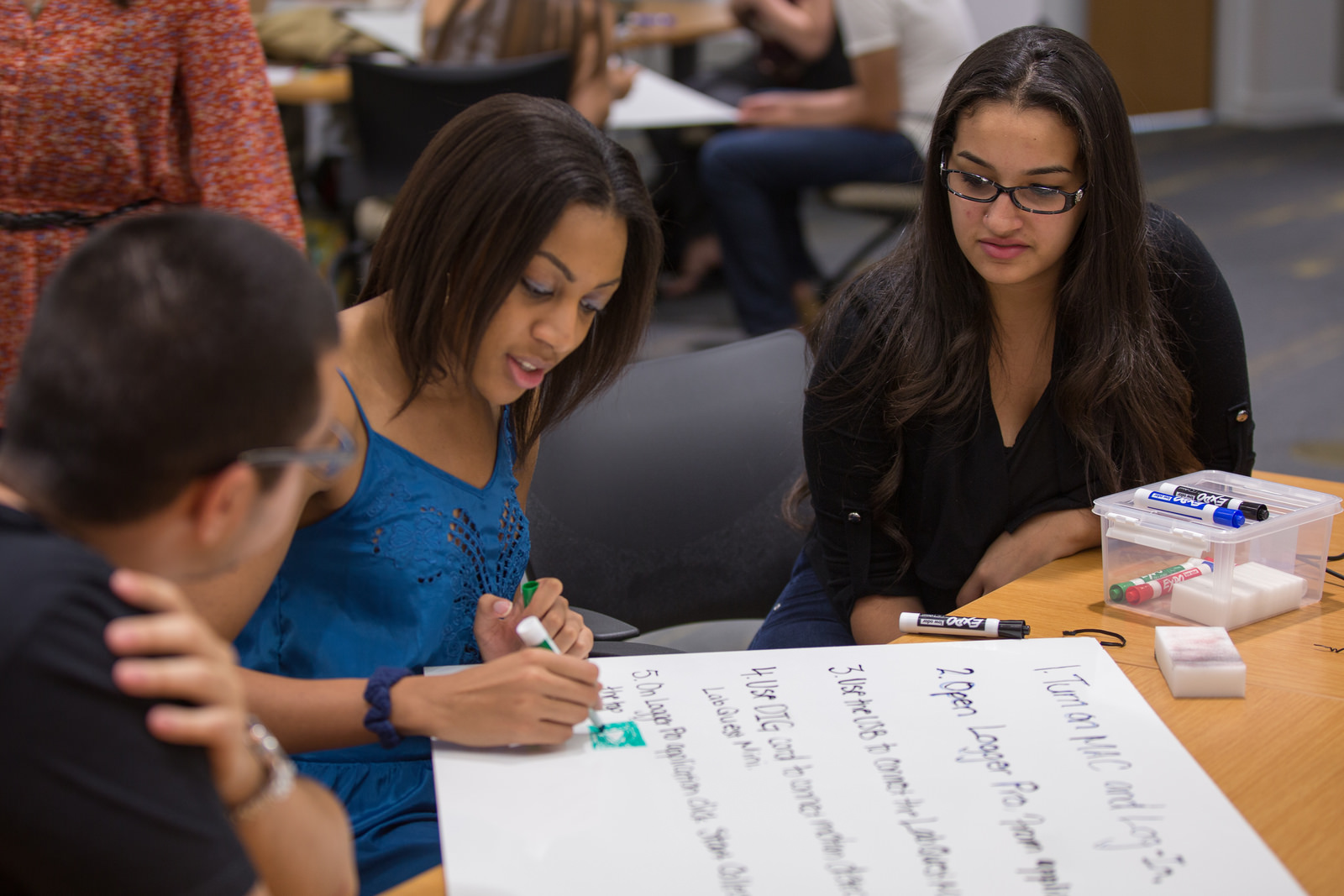Written by: Chris Grau
Working with LAs provides a number of benefits to you and your students. One of these benefits is creating a more positive learning environment, which has been shown to support student achievement. However, creating such a learning environment requires instructors to be flexible and responsive in implementing support for your students and LAs. Furthermore, given the diversity of FIU’s student body, it is important to consider a variety of methods that will support all of our students and their identities. Here we provide some guidance and resources on ways that you can create a more positive and inclusive environment.
Valuing all of your students’ and LAs’ identities.
No one person is just one thing, we all are the sum of multiple identities and we are best able to thrive in spaces that honor all that we are. In the LA seminar, LAs learn that each student is a sum of many identities and that each has varied educational and life experiences. Creating and maintaining a positive environment where students feel safe and trust others in the learning community, requires acknowledging each student for their uniqueness, individual strengths, and areas of growth. For example, sharing your pronouns and asking that LAs and students share theirs when they introduce themselves to others in the community is a way to support transgender and/or non-binary students to feel a sense of belonging. Continue to model correct pronoun use by adding your pronouns to your email signature and Zoom name tile and encouraging your LAs and students to do the same. It’s these seemingly small, but intentional efforts such as this impact students, their learning, and the environment.
- Gender Pronouns Resource Guide
- Glossary of LGBTQ-Related Terms
- Fourteen Recommendations to Create a More Inclusive Environment for LGBTQ+ Individuals in Academic Biology
Create a shared list of classroom norms or agreements.
Classroom norms are an agreed-upon set of expectations for classroom participation and are critical when establishing your classroom community. These expectations are not limited to how and when students complete assignments or activities, but also how members of the classroom interact with each other and what students can expect from you. Collaborate with your students and LAs to create a list of classroom norms or agreements. This communicates that you value your students’ and LAs’ needs and ideas and helps to establish trust and respect for everyone in the classroom. They also give you, your LAs, and your students something to reference in the event that someone is acting in a way that is outside of the classroom community’s agreements. Throughout the semester these agreements may need to change as student needs and circumstances shift, but consistent and explicit communication of these norms communicate your investment in developing a strong and safe community of learners. Even when we don’t communicate these norms explicitly, norms are still established, but they may not be the ones that you want so it is best to clearly communicate your expectations.
Create space for your students’ and LAs’ voice to be heard. It is important to create a culture of open communication and trust between everyone in the classroom.
Students: Students need learning environments that are responsive to their needs and experiences. Therefore it is imperative to create opportunities to learn more about them. This can begin as early as the beginning of the semester with a welcome survey to provide you with information about your students. As the semester continues, do regular check-ins with your students to learn about their experience in the classroom and what support they need to be successful. These can happen formally, for example using a survey, or informally, by having LAs do check-ins with their groups. Be sure to tell your students about why you are checking-in and whenever possible any changes you make in response to what you learn from them.
LAs: Your LAs are your partners in supporting your students so it is important to create and maintain space for them to share their observations and experiences. Check-in with your LAs during planning meetings to learn about their experiences when they took the course, what they notice happening with students, and what is happening in their lives more generally. Since the faculty-LA relationship is best when it includes mentorship, be sure to offer your LAs support and encouragement for their endeavors in and outside of the classroom.
Here are ways you can better support specific groups of students and LAs in the classroom. If you are interested in more identity-specific support please follow the links below for more information:
- Support Strategies for People of Color
- Support Strategies for LGBTQ+
- Support Strategies for Women
- Support Strategies for Students and LAs with disabilities
- Support strategies for First-Generation College Students
Resources:
@FIU
- Kognito offers many free online courses for Faculty and students to learn, practice, and self-assess their ability to manage conversations that can lead to positive changes in social, emotional, and physical health to our diverse student body.
- FIU Counseling and Psychological Services
- Safe Zone Training
Inclusive Pedagogy
- University of Wisconsin Madison, A Guide to Bias-free Communication in University Publications
- Columbia University, Inclusive Teaching Guide
- Yale University, Inclusive Classroom Climate
- American Philosophical Association, Guidelines for Non-Sexist Use of Language
- University of Michigan, Creating Inclusive College Classrooms
- Association of American Colleges & Universities, Making Excellence Inclusive
Self-care
Healing Spaces for Black People
- Ethel’s Club
- Safe Black Space
- Community Healing Network
- Heal Haus
- Inclusive Therapists
- The Love Land Foundations
- The National Queer and Trans Therapists of Color Network
- Sista Afya Community Mental Wellness
- The Nap Ministry
- Therapy for Black Girls
- Womxn and Femmes of Color Healing and Support Group
